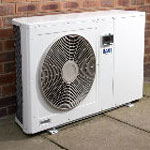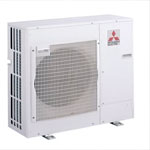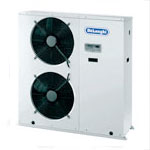Well, can you believe it’s August already?
I don’t know where the year is going! It feels like the kids have only just gone back to school, but already they are off on their Summer holidays.
With this in mind, I am reminded that there are only two months until the scheduled launch of the long awaited Green Deal.
Although there are rumours of delays for the energy efficiency loan scheme to come into action, October is still the official estimate for launch - But it’s something I’ll be keeping my ears open for if there are any changes.
(If you want to brush up on your knowledge of the Green Deal
and see what all the fuss is about, this guide provides
a straightforward introduction on the matter.)
However, the build-up to the launch has been anything but
smooth and the Green Deal has faced multiple criticisms since its original
announcement.
This is mostly due to costing and a regular change from what was originally planned. In the past month, energy companies have been criticised for increasing the amount they charge to customers, despite making huge profits themselves.
Ofgem has recently announced that green policies are not responsible for rising energy bills, according to recent figures. In fact, it is the price of gas that has contributed the most to the sharp rise in costs.
This is worrying for the average bill-payer, who is already stretched financially. However, it does highlight the appeal that can come with investing in greener technology and becoming your own supplier of energy, giving you peace of mind that you won’t be left without heating or power.
But there are strong concerns that this isn't the case anymore.
I’m a strong believe in the Green Deal. I think in theory it is exactly what this country needs to get into gear and start making more effort to use less energy, and save money in the process. But it’s that second part that worries me. With funding being constantly withdrawn, the Green Deal risks becoming out of reach for many, and become less appealing to businesses – who it should really be helping to boost our economy.
This is mostly due to costing and a regular change from what was originally planned. In the past month, energy companies have been criticised for increasing the amount they charge to customers, despite making huge profits themselves.
Ofgem has recently announced that green policies are not responsible for rising energy bills, according to recent figures. In fact, it is the price of gas that has contributed the most to the sharp rise in costs.
This is worrying for the average bill-payer, who is already stretched financially. However, it does highlight the appeal that can come with investing in greener technology and becoming your own supplier of energy, giving you peace of mind that you won’t be left without heating or power.
But there are strong concerns that this isn't the case anymore.
I’m a strong believe in the Green Deal. I think in theory it is exactly what this country needs to get into gear and start making more effort to use less energy, and save money in the process. But it’s that second part that worries me. With funding being constantly withdrawn, the Green Deal risks becoming out of reach for many, and become less appealing to businesses – who it should really be helping to boost our economy.
For example, it was only last week that it was announced that further cuts would be made to the feed-in-tariff for solar panels, from 21p p/kWh to just 16p. This figure was already cut from a whopping 43p p/kWh last year. For those who aren't sure what this means, let me put it into real terms. If you invest money into installing solar panels, you can then use the energy they produce to power your home. However, any energy you don’t use can be sold back to the grid. But, the price they would pay you for each kWh is dropping, meaning you may not see a difference in energy bills for a significant amount of time.
Of course there are a few months left to go until anything is officially launched, but with a bit of luck, there won’t be any more cuts.I have read that there is to be a £2 million publicity campaign for the scheme, and hopefully this will be a big enough budget to let enough people know about these new opportunities.
If you’re interested in the Green Deal, I’ll be tweeting the news as and when I hear about it. And why not check out our Facebook page for the latest blog posts from Find Energy Savings as well as regular energy and money-saving tips for the home.
Until next time!









